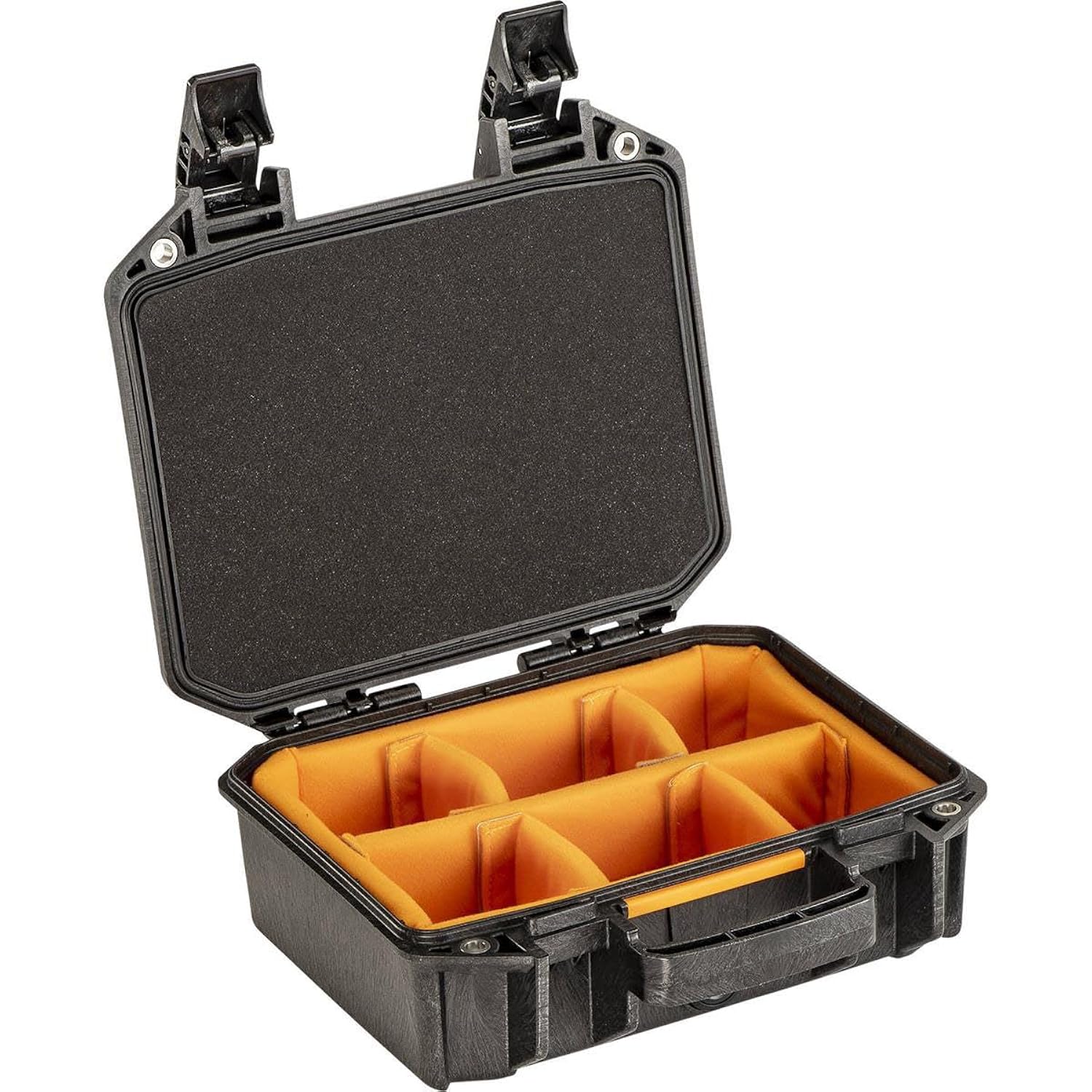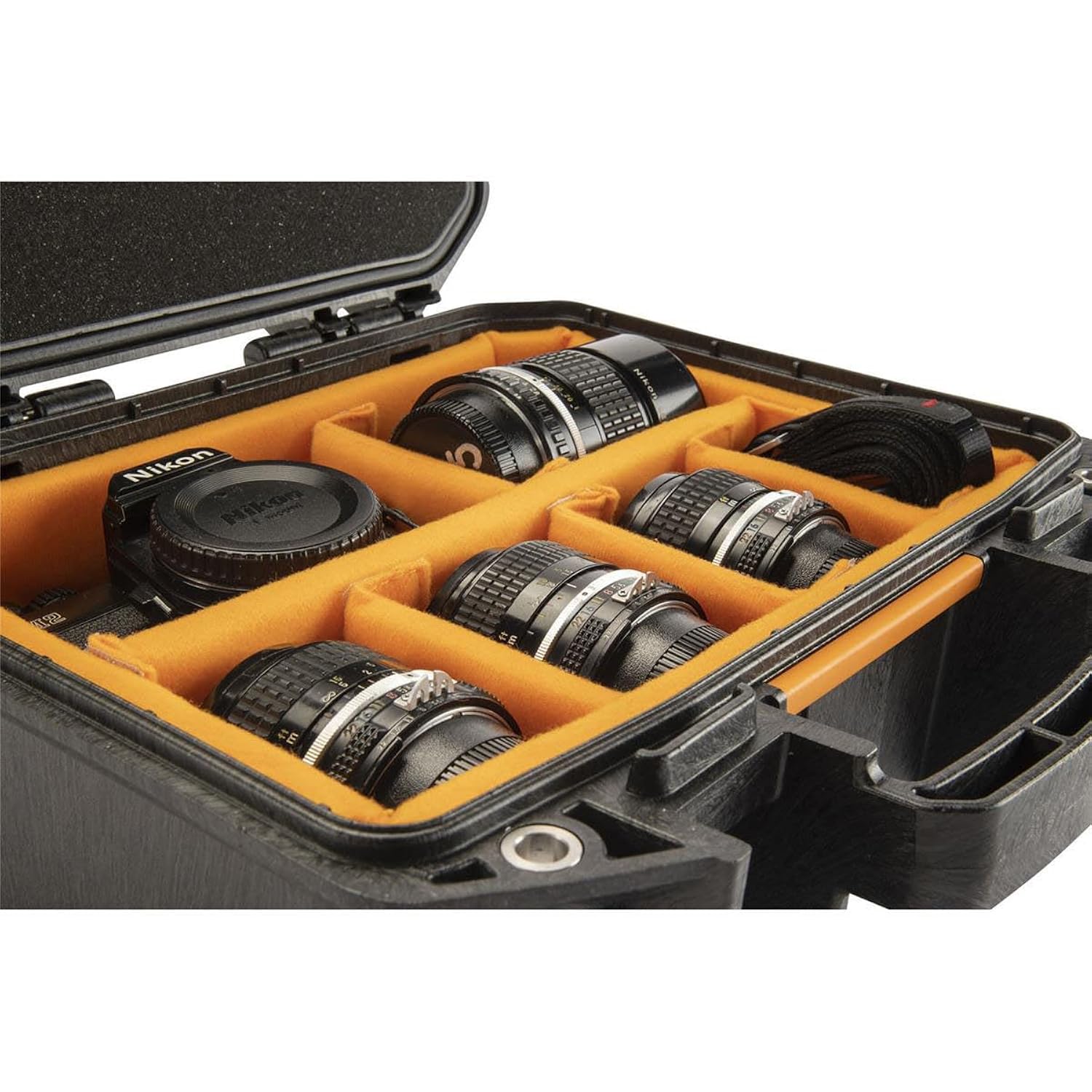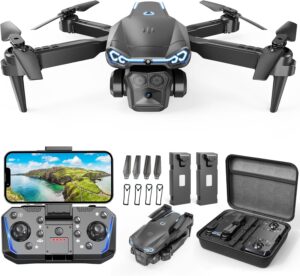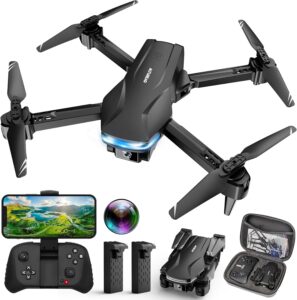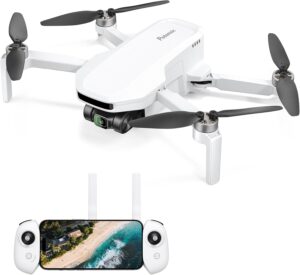Are we the only ones who think a good case should feel like a small, dependable friend with a very firm handshake?
Why We Picked the Pelican Vault V100 Hard Case
We wanted a case that could babysit a camera one day, a pistol the next, and a messy spread of cables, mics, and memory cards in between—without complaining or developing a chip on its polymer shoulder. The Pelican Vault V100 Hard Case (Camera, Pistol, Gear, Equipment) kept popping up as a practical, affordable, no-nonsense choice from a brand that understands hard knocks and questionable weather.
We liked how it promised serious protection without demanding we remortgage the cat. We also liked that it looked plain in the best possible way—like it meant business and was happy to be scuffed up doing it.
First Impressions and Unboxing
Our first impression? It’s tidy and unpretentious, like a well-organized tool shed without the spider webs. The V100 feels solid in the hand but not like a boulder attempting to ruin your rotator cuff. The latches snap shut with the satisfying finality of a good decision, and the handle is the kind you can picture carrying for a mile without fretting.
We appreciated that the foam is ready to be customized. It felt like an invitation rather than a chore: “Put your life in me, and cut me to fit,” which is a sentiment we could stand to hear more often.
Build Quality and Materials
We care about what a case is made of because we are old enough to remember the disappointment of cracked plastic. The V100 is built from a high-impact polymer that feels dense and doesn’t flex like a cheap tote. It’s crush- and dust-resistant, with a gasketed lid that aims to keep the elements out.
We should be clear: this is a weather-resistant case, not a submarine. It’s designed for rain, splashes, dirt, and realities that smell faintly of parking lots, not full-on river baptisms. For most of us, that’s perfect.
Fit and Finish
The seams are clean, the lid aligns properly, and the hinges don’t give us that “please don’t snap” premonition. The two latches close securely without requiring body-weight theatrics. We especially like the reinforced lock hasps—metal-lined, sturdy, and not clearly intended to be decorative.
We also noticed the case stacks neatly. If you end up with two or five, your trunk won’t turn into a citrus crate situation where everything slides around and bruises easily.
Size, Capacity, and Everyday Scenarios
This case sits at the sweet spot for small kits. The approximate interior dimensions hover around 11 x 8 x 4.5 inches, which makes it just right for a mirrorless camera with a small lens, a full-size handgun with magazines, or a curated collection of things you can never find when you need them (we’re looking at you, SD cards and Allen keys).
We’ve used it for road trips, range days, and flights. It’s small enough to chuck in a backpack or hide under a car seat. Not to be dramatic, but the only thing that fits better in a glove box is a glove.
For Cameras and Small Video Kits
We’ve built out a few common setups in the V100, and they all felt well-supported and not overly cramped. With careful foam cutting, you can manage the following without the sense you’re playing an equipment version of Tetris on hard mode:
- Mirrorless body (Sony a7 series, Canon R10/R7, Fuji X-T) + short zoom or prime
- Two small primes plus body caps and filters
- Small action camera setups with mounts and batteries
- Compact mics (Rode VideoMicro/GO II transmitters) and cables
We like to prep the foam with a little extra breathing room around lens fronts and viewfinders, especially if we’re the sort to take bends too fast in parking garages. The top “eggshell” foam helps hold objects gently in place.
For Pistols and Range Kits
The V100’s proportions are ideal for a full-size semi-auto pistol, two or three magazines, and a small cleaning kit. If your handgun is particularly long or comes with unwieldy optics, measure twice before committing foam to blade. With smart layout, a 1911, a G17, or a Sig P320 looks and feels right at home.
We suggest cutting foam outlines so magazines lay flat and don’t rotate—interior clatter is not only annoying; it’s how finish wear starts. We keep a soft cloth tucked along the side as an extra buffer.
For General Gear and Equipment
We’ve stashed USB drives, drives that pretend they’re indestructible, field recorders, lav mics, and a vintage light meter that should probably be in a museum. The V100 loves orderliness; it rewards a little planning with a lot of calm. If you travel with medication, tools, or delicate knickknacks only you understand, this case gives them a home address.
If we’re honest, we’ve also used it as a lunchbox for a day. Sandwiches were flattened but safe. We wouldn’t recommend doing that unless you like your bread introspective.
Foam: What You Get and Why It Matters
The V100 arrives with multiple layers of foam, typically including a convoluted (eggshell) top, flat base, and a couple of customizable middle layers. It’s not fancy in the artisanal sense; it’s practical in the “you can cut it to suit your life” sense.
We’ve worked with pricier pick-and-pluck foam and laser-cut inserts, and while those have their charms, the V100’s included foam is plenty for most of us. It performs best when you take a few minutes to plan the layout and don’t rush the cutting.
How We Cut the Foam Without Regrets
We have learned, through error and a small collection of misfit foam chunks, that patience is everything. Here’s our friendly, slightly obsessive way to get it right:
- Arrange your gear on top of the foam, leaving at least a half-inch buffer around every edge.
- Trace outlines lightly with chalk or a silver marker. Resist the urge to improvise with permanent markers unless you love living with your mistakes.
- Use a fresh utility knife or, our favorite, an electric carving knife. Yes, like the one your uncle uses for turkey. It slices clean with less tearing.
- Cut less than you think you need. Test-fit, then shave or widen as needed.
- Round the corners inside cutouts; sharp inside corners encourage tearing.
- If you’ve got tall items, consider leaving one layer mostly intact and shaping only the top layer for snugness.
- Don’t glue layers unless absolutely necessary; friction fit is ideal. If you must glue, use a spray adhesive designed for foam.
We also like to tuck a silica gel pack in one corner. It takes up no space and helps with humidity, which is a sneaky enemy of optics and steel.
Latches, Locks, and The Business of Not Popping Open
The V100 uses dual latches with a confident snap and no accidental “oops.” They’re easy enough to open with gloves, which we appreciate when our hands are cold or the coffee hasn’t kicked in.
The reinforced lock hasps accept standard padlocks, and that’s key if you’re transporting a firearm or just prefer to keep curious fingers out of your things. We’ve used short-shackle, 4-pin padlocks with no drama. Marking one key red and leaving a spare at home is the kind of future kindness we try to bestow upon ourselves.
Airline and Travel Considerations
If you’re traveling with a firearm, check current airline and TSA rules before you pack. The short version: firearms must be unloaded, in a locked hard-sided case, declared, and checked. The V100 fits the “hard-sided and lockable” brief nicely. We use non-TSA locks for firearms; TSA agents have their own procedures if inspection is required.
For camera gear and general kit, the V100 works well inside a larger checked bag or as a standalone carry if dimensions fit the airline’s policies. We’ve had better luck checking it inside a suitcase than trying to convince an overhead bin to adopt it during a busy flight.
Weather Resistance and What Happens When It Rains Sideways
Vault cases are weather-resistant, with a gasketed lid that keeps out dust and moisture. We’ve used the V100 in heavy rain, tossed it in wet truck beds, and parked it on damp sidewalks while reorganizing life. The interior stayed dry and tidy, like a tiny climate-controlled apartment.
We don’t treat it like a flotation device. Submersion is not what it’s built for. If you anticipate needing full submersion protection, look into Pelican’s classic IP-rated cases and a model that includes a purge valve. For storms, dust, and general chaos, the V100 is more than capable.
Temperature and Pressure Notes
We’ve taken the case from cool, dry air to warm, humid patios with no ill effects. Because this model doesn’t center its identity on a pressure relief valve, we don’t store sealed liquid containers inside. If you’re changing elevation rapidly, crack it open gently when you arrive to let the pressure equalize.
Foam does better when it’s kept dry; if your gear returns from a humid trip, prop the lid open in a warm room and let everything breathe.
Portability and The Joy of a Good Handle
We care about handles because we’ve held bad ones. The V100’s handle is firm, slightly textured, and just wide enough for comfort without feeling floppy. It folds down cleanly so it doesn’t hitchhike on your jacket sleeve.
The weight, depending on foam and contents, stays modest. As a day-to-day carry, it never feels like we’re lugging around a stubborn pet. Walking a few blocks to a studio or range is easy, which is precisely how a small case should behave.
In Use: What We Noticed After a Month
After living with the V100, we started treating it like a trusted rig. We dropped it gently, then a little less gently. We stacked it under other cases and let a tripod fall against it in the trunk. The latches never budged, and the lid seal stayed consistent.
We became unreasonably fond of the way the foam grips gear without swallowing it whole. We’ve had cases where removing a camera felt like retrieving a stubborn casserole from a too-small oven. Here, retrieval has the right amount of resistance—enough to protect, not enough to annoy.
Noise, Creaks, and Little Things That Matter
We appreciate a quiet case. The hinges move without creaks, and the latches close with a confident click. There’s no rattling when it’s locked and loaded, which bodes well for delicate contents and our patience.
We did notice that the latches feel tight when new. They break in nicely but still keep a firm hold. It’s reassuring, like a handshake that got the memo about boundaries.
Comparisons and Alternatives
We love choice, even if it complicates our decision-making and leads to warehouse-like closets. The V100 sits in a crowded field, but it has a few clear rivals worth mentioning: the classic Pelican 1200, the Nanuk 905/910, and the more budget-friendly Harbor Freight Apache line.
We’ve handled all of these in real-world conditions (otherwise known as parking lots, basements, and the occasional coffee-scented hotel lobby). Here’s how the V100 tends to stack up.
Versus Pelican 1200 (Classic Line)
The Pelican 1200 is the old warhorse: iconic, extremely tough, often IP-rated, and typically fitted with a pressure valve. It’s heavier than you expect given its size and usually pricier than the V100. The latches are a bit different—familiar to those who’ve used Pelican’s classic Press and Pull style.
We reach for the 1200 when we need a little more assurance against immersion or pressure changes. For everyday gear protection where rain and dust are the main villains, the V100 gets our vote thanks to cost, ergonomics, and the general feel of modern practicality.
Versus Nanuk 905/910
Nanuk makes lovely cases with ergonomic handles and slick latches. The 905 is roughly comparable in volume to the V100, while the 910 is a step up in size. Nanuk’s latches feel elegant, the fit and finish are polished, and prices tend to be higher.
If your hands are picky about latch feel or you crave a certain visual style, Nanuk makes a compelling argument. If you want the Pelican name, a lower price, and a no-frills attitude, the V100 keeps things simple and sturdy.
Versus Harbor Freight Apache
The Apache cases are aggressively priced and surprisingly competent for certain tasks. They’re the impulse buy of the hard case world. We’ve used them for light-duty assignments and felt fine about it.
Where the V100 differentiates itself is in the consistent build quality, more robust materials, and better long-term reliability. If you’re protecting expensive optics or firearms, the V100’s extra cost buys real peace of mind.
Value for Money
This is where the V100 earns its place. It’s notably more affordable than many classic Pelican models while retaining the brand’s attention to ruggedness and protection. We consider it a high-value pick for people who need serious protection but don’t need ocean-floor waterproofing.
If your use case includes frequent travel, rough storage environments, or you’re just the kind of person whose gear falls off tables more than average, the V100 keeps disasters at a comfortable distance without draining your budget.
Practical Tips We Wish Someone Had Told Us
We learned some of these the hard way, which you are welcome to avoid:
- Measure your longest item diagonally before cutting foam. Corners create extra room.
- Keep one foam layer uncut as a “universal” base. You can swap top layers for different kits.
- Write your name and phone number inside the lid with a paint pen. We learned this after an unplanned separation in a rideshare.
- Desiccant packs are cheap insurance. Swap them out every few months.
- If the latches feel tight at first, open and close them 20–30 times at home. They’ll loosen up just enough.
Common Mistakes to Avoid
- Cutting too deeply too soon. We always start shallow.
- Storing solvents or oily rags inside. Foam can absorb smells and chemicals.
- Using oversized padlocks with long shackles. They rattle and can mar the case.
- Leaving the case sealed after wet use. A quick air-out keeps things fresh.
Who It’s For (and Who Might Want Something Else)
We think the V100 is for people who want a trustworthy small case to protect valuable gear against everyday catastrophes: drops, bangs, rain, dust, and that unique grit found in car trunks. It’s perfect for photographers, range-goers, field recordists, small drone pilots, and habitual organizers.
If you require immersion-proof protection, specialized foam inserts, or gear-specific compartments, you might want to look at classic Pelican models with IP ratings or a dedicated camera case system. Likewise, if you need to carry bulky setups, consider the next size up in the Vault line.
Durability: What We Put It Through
We’re not laboratory technicians, but we are clumsy adults. We dropped the V100 from waist height onto asphalt (accidentally, then deliberately). We stacked it under a heavy light stand and let a steel clamp smack into it. The case shrugged it off with cosmetic scuffs and an air of mild judgment.
The corners show light wear after a few weeks of use, which we consider character, not damage. The hinges remained tight. The foam continued to hug our gear with the kind of loyalty you can’t buy—except, well, you can, and you just did.
Long-Term Use Considerations
Foam compresses slightly over time, especially if you’re pressing it into service with dense items. We’ve had to refresh foam on older cases eventually, but not for a long while. The polymer shell ages gracefully; we’ve seen Pelican shells from other lines that look roughed up but still perform like day one.
If you want to keep it looking nice, avoid storing it under heavy metal objects that slide around. If you want it to look seasoned and worldly, toss it into trunks with abandon. Both approaches seem to work.
Security, Subtlety, and Avoiding Unwanted Attention
We prefer gear that doesn’t advertise itself. The V100’s subdued styling and black finish read as generic equipment, not “expensive toys inside.” That alone is a kind of security. Add two decent padlocks and you’ve covered the basics.
We also appreciate that when we do need to open the case quickly—say, to grab a mic before a take—we can do it without performing a whole latch ballet. It opens easily, closes decisively, and doesn’t require that we look at it with stern concentration.
Maintenance and Care
We treat the V100 like a good pair of boots. Wipe it down, don’t store it wet, and occasionally show it the sun. Here’s our simple routine:
- Brush out foam crumbs with a hand vacuum after fresh cuts.
- Wipe the gasketed lid channel with a damp cloth to keep grit from compromising the seal.
- Check latches and lock hasps for debris; compressed air is a friend.
- Every few months, leave the case open for an hour to air out—especially after rainy days.
We also keep a spare foam layer set on hand, which lets us switch the case from camera to range duty in under ten minutes. We feel a little smug every time we do it.
Pros and Cons
Let’s acknowledge strengths and quirks in a way our relatives often fail to do for us at family gatherings.
Pros:
- Rugged, high-impact polymer shell that feels trustworthy
- Weather- and dust-resistant gasket for real-world conditions
- Reinforced lock hasps for secure transport
- Manageable size and weight; easy to carry and stash
- Included foam layers are versatile and easy to customize
- Great value for the protection you get
- Latches are secure and glove-friendly
Cons:
- Not designed for full immersion; weather-resistant rather than waterproof
- Foam is good but not premium; perfectionists may want custom inserts
- Latches can feel stiff when new
- Interior height limits larger camera rigs and tall optics
- No pressure relief valve, so it’s not ideal for sudden elevation changes or sealed liquids
Real-World Loadouts We Loved
We promised ourselves we wouldn’t get carried away, and yet here we are, very pleased with these setups:
- Mirrorless Minimalist: Camera body, 35mm prime, spare battery, micro cloth, and a small on-camera mic. Nothing rattles, nothing gets scratched, and we feel like professionals who iron their socks.
- Range Day Comfort: Full-size pistol, three magazines, bore snake, a small bottle of oil in a leak-proof bag, and earplugs. If we could add a coffee maker, we would, but that’s a different case.
- Field Audio Lite: Pocket recorder, two lav mics, spare AAAs, 3.5mm adapters, and windshields. It’s absurdly satisfying to open the case and see everything in its little bed.
- Tech Triage Kit: SSDs, card readers, USB-C hub, cables coiled like well-behaved pythons, and a tiny screwdriver set. When someone says, “Does anyone have a…?” we get to say yes.
Specifications at a Glance
We know not everyone wants a novel before the numbers. Here’s a quick-hit table with the essentials. Measurements are approximate and may vary slightly by batch.
| Feature | Pelican Vault V100 |
|---|---|
| Interior Dimensions | ~11 x 8 x 4.5 inches |
| Exterior Dimensions | ~12.5 x 12 x 5.5 inches |
| Weight (Empty) | ~4 lbs |
| Material | High-impact polymer |
| Seal | Weather- and dust-resistant gasket |
| Latches | Dual secure latches (glove-friendly) |
| Locking Points | 2 reinforced metal-lined hasps |
| Foam | Multi-layer set (eggshell top, flat base, customizable middles) |
| Pressure Valve | Not featured (check current listings) |
| Stackable | Yes |
| Typical Uses | Camera, pistol, audio gear, tools, electronics |
| Warranty | Limited (commonly 3-year on Vault line; check local terms) |
If you’re measuring for a particular item, we recommend checking official specs and giving yourself a little buffer, especially for items with knobs, levers, or that one oddly proud switch.
Frequently Asked Questions
We collected the questions we get from friends and a few we whispered to ourselves late at night.
-
Is it waterproof? It’s weather-resistant—great against rain and dust. It’s not meant for submersion. If you need dunkable, look at classic Pelican models with IP ratings.
-
Will it fit a full-size handgun with optic? Usually yes, but measure the total height and length. The interior depth is the limiting factor for tall optics and suppressor-height sights.
-
Can we carry this on a plane? As a gear case, possibly, depending on airline and overall dimensions of your carry-on. As a firearm case, it must be locked and checked. Always confirm current airline and TSA rules.
-
Is the foam pick-and-pluck? It typically includes cuttable layers rather than pre-cubed pluck foam. We prefer the cleaner edges from cutting, but techniques vary. An electric carving knife is our secret weapon.
-
How many magazines can we fit alongside a full-size pistol? Two to three, comfortably, with room for a small cleaning kit if you plan your layout cleverly.
-
Does it smell like new plastic forever? Only for the first week or so. The scent fades, and your gear won’t smell like a tire store.
Little Quality-of-Life Touches We Appreciate
There are small things that make us like a case beyond reason. The V100’s flat lid lets us label it without slapping stickers over ridges. The hinges behave well even when we open the lid at odd angles because we are perpetually doing three things at once.
We also enjoy that it doesn’t scream for attention. In a world where everything is trying to be a brand ambassador, this case is a quiet professional.
Situations Where It Surprised Us
We assumed we’d keep just one foam configuration, but we ended up with multiple layouts we swap in and out depending on the week. This is the adult version of paper dolls, only with more torque wrenches and fewer hats.
We also expected to baby the case at first. That lasted one afternoon. After we watched it shrug off a steel clamp, we started treating it like a durable tool. It seems to prefer this, like a jacket designed for rain that sulks when the forecast is sunny.
The Aesthetics of Being Prepared
There’s something undeniably satisfying about loading up a case and snapping it shut. It feels like tidying a small universe. The V100 encourages that feeling without making a huge production. You close it, lock it, and move on with your day.
We suspect this is why people end up with more than one. It’s not just a box; it’s a small promise you keep to yourself: the important stuff will be okay.
When to Size Up
If you regularly pair a body with a long lens, keep a pistol with a big optic, or travel with a mini drone plus bulky chargers, consider the next Vault size. The V200 and V300 exist for a reason, and that reason is people like us who always find one more useful thing to pack.
Consider your tallest item and how often you plan to re-cut foam. If you hate reconfiguring—and many of us do—go bigger and give yourself room.
Environmental Thoughts, Because We Had Them
Hard cases aren’t disposable, and that’s the point. A well-made case like the V100 outlives the gear inside it, which is possibly the highest compliment we can give an inanimate object. Buy once, use for years, send it to the next chapter with scuffs that tell stories you pretend not to remember.
We reuse foam cutouts as padding in other bags, or as makeshift coasters for drinks we definitely won’t spill. The polymer shell, meanwhile, doesn’t seem interested in deterioration.
The Verdict We Carry Around
We think the Pelican Vault V100 Hard Case (Camera, Pistol, Gear, Equipment) is one of the best small hard cases for people who need real protection without paying for features they won’t use. It’s tough, weather-ready, friendly to customize, and low-drama in the best way.
If you need full immersion protection or specialized inserts, step up to a different model. If what you want is a reliable case you can throw in a trunk, carry into a studio, check in a suitcase, or set down on a damp sidewalk while you juggle coffee and cables, the V100 is perfectly suited to that lovable chaos.
Our Bottom Line
We’ll keep using ours for everything from mics to handguns to the delicate thing we can’t remember the name of but would miss if it vanished. We like the price, we trust the build, and we’ll probably buy another. That sounds like commitment, and we’re okay with that.
Disclosure: As an Amazon Associate, I earn from qualifying purchases.
